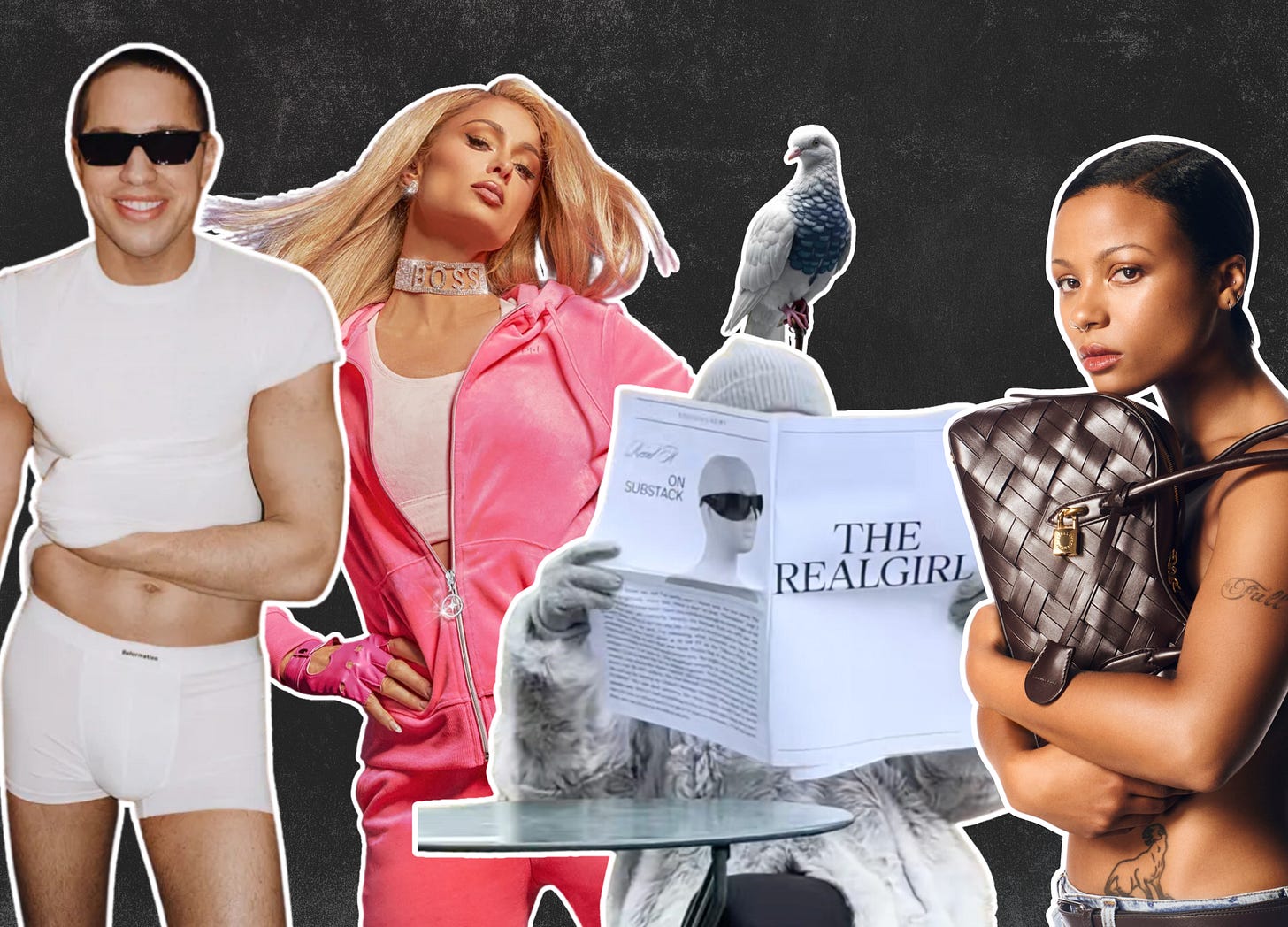Pete Davidson, Paris Hilton, and the End of Boring Sustainability Marketing
Why pop culture and playfulness are the future of sustainable fashion marketing.
Forget the guilt trips and the doom-and-gloom. The brands winning in 2025 aren’t just ‘doing good’—they’re making sustainability something people actually want to talk about.
From Pete Davidson playing the “Official Boyfriend” for Reformation to The RealReal going full Gossip Girl on Substack, here’s how the rules of sustainability marketing are being completely rewritten.
The Problem with Traditional Sustainability Marketing
I’ve said it before and I’ll say it again: most sustainable fashion marketing is boring and painfully predictable.
Across the board, many consumer-facing brands follow the same sustainability playbook. The tone may shift slightly depending on the audience, but when you line up their messaging, it’s hard to ignore how formulaic it all feels.
Trust me. I’ve done it.
I get why brands stick to the same playbook, using similar language, visuals, and narratives. But playing it safe has a cost.
With increasing scrutiny and new greenwashing laws, playing it safe helps them avoid backlash and potential lawsuits.
There’s also a fear of blending in with mainstream culture—the very thing sustainability is supposed to disrupt.
Sustainability has traditionally been positioned as “anti-mainstream’, challenging overconsumption, fast fashion, and mass production. If a sustainable brand leans too far into pop culture, humor, or trendiness it risks being perceived as inauthentic or “too commercial.”
So brands play it safe, worried that the smallest misstep will overshadow the entire message. The irony here is that sustainability is meant to disrupt the status quo. But by sticking to a formula, sustainability brands risk blending into a niche rather than breaking into the mainstream.
The fear of doing something creative, unexpected, or culturally relevant means brands end up sounding the same—causing audiences to tune out rather than engage. Worse, it creates an echo chamber, reinforcing existing beliefs rather than expanding the conversation to mainstream consumers.
In order to break the rules. You have to understand the rules.
I’m not saying sustainable brands need to act like fast fashion. But I am saying it’s okay to crack a joke.
In the rest of this 12 minute read I talk about:
Why sometimes, the most effective way to market sustainability is to not mention sustainability at all—just ask Reformation.
Why The RealReal’s Substack is the smartest play no one saw coming.
Stella McCartney’s new campaign spotlights bird extinction, but it’s a miss for me.
In 2025 and beyond, the brands shaping culture will be the ones shaping the future of fashion. Want to be one of them? Read on.







